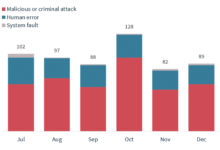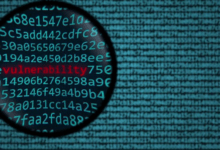What Is Hacking: Your Complete Safety Guide 2024

Curious about what is hacking? Learn what hacking is, what different hacker types are, their motivations, how they operate to protect yourself.
Editorial
Last updated on June 11th, 2024

Share on LinkedInShare on Twitter
The word “hacking” often brings up images of hooded figures in dark rooms, tapping away at keyboards to steal our identities and drain our bank accounts. But the truth is, hacking is a much broader concept, including both the malicious and the ethical.
In fact, did you know that the cost of cybercrime globally is estimated to reach a staggering $10.5 trillion by 2025? The skills used to break into a computer system can also be harnessed to identify and patch security weaknesses. In this article, we’ll talk about what hacking is, who hackers are, why they hack, how they hack, and much more!
History of hacking and hackers
Beginnings (1960s-1970s): The word hacker itself was coined at MIT in the 1960s to describe a group of tech-savvy folks who loved to tinkerwith and wrangle computer systems. The early hackers, members of the Tech Model Railroad Club and later the MIT AI Lab, were trying to take the limits off of what computers could accomplish. Their hacks were mostly discovery and technical finding, to solve technical problems, develop new software.
The Advent of Computer Networks (1970s-1980s): The hacking landscape widened with the advent of ARPANET (the progenitor of the Internet) in the late 1960s. Phone Phreaking, which started in the 1970s, and involved people hacking the phone system to able to make free calls. Famous around that time, John Draper aka Captain Crunch He found that inexpensive toy whistles he could use to reproduce the pitches required to game the phone network.
With the rise of personal computers in the 1980s, hacking became something anyone could do. Hacker group from that era, Example – Chaos Computer Club (CCC) in Germany, which was known for its impact-full hacks and information-freedom-centered activism. The 1983 film WarGames popularized the idea hacking by portraying a teenager hacking into a military supercomputer that could launch nuclear weapons, showing the world the real world risks and the rest, as they say, is history.
Legal and Ethical Landscape (1980s-1990s): The visibility of hacking became larger leading to legislative solutions. In 1986, the U.S. government passed the Computer Fraud and Abuse Act (CFAA) in order to better combat computer-related crimes. The arrest of Kevin Mitnick, one of the highest-profile hackers of the time, illustrated the necessity of proper laws.Suppressive governments probably noticed this and, with some tweaking, realised this could actually turn a two-way weapon with the right kind of modification.
The internet was also growing rapidly, and there was a string of new opportunities as well as, new adversaries, for hackers in the 1990s. This time also brought our eyes to a new kind of hacker never seen before – the cybercriminal. Detailing how these people capitalized on security vulnerabilities for profit, which in helped come to be careful of viruses and other cyber attacks. This is the era when talk of “black hat” hackers, who were there to steal or maliciously break things, first started cropping up and “white hat” hackers, who wanted to improve security, were coined.
The Modern Era (2000s-Present): The 2000s: The Decade of Commercial Hacking Well-funded organized crime syndicates and state-sponsored groups enriched their arsenals by engaging in cyber espionage and warfare. Well-known examples include 2007 cyberattacks on Estonia and 2010 Stuxnet worm infiltrating Iranian nuclear facilities. These events made clear the potential geopolitical dimensions of hacking.
Hacking-as-protest, meanwhile, became more widespread; Anonymous hacks for a cause, declaring they are “hacktivists.” Whether they were attacking a company or helping a social movement, their operations could fall somewhere between activism and cybercrime.
The Future of Hacking: Even today, hacking has grown a lot due to technological advancement. Advancement on artificial intelligence, the Internet of Things (IoT) and quantum computing both promises new opportunities but also presents new threats. The state of cyber security today is such that we cannot prevent all attacks regardless of how secured we think our defenses are so this world now more than ever depends on help from ethical hackers and security researchers.
Overall, the past of hacking showcases a dance between where technology travelled, what could and couldn’t be done ethically and legally, and where it lives in our society. The origins of hacking as an academic curiosity through its evolution into a potential threat to global security has fundamentally changed the digital age.
What Is Hacking?

Hacking involves activities aimed at compromising digital devices like computers, smartphones, tablets, and networks. While hacking isn’t always malicious, most references to it and hackers portray them as engaging in unlawful activities, motivated by financial gain, protest, information gathering (spying), or simply the challenge.
Who Are Hackers?

Some believe a hacker is a self-taught whiz kid or rogue programmer adept at modifying computer hardware or software for uses beyond the original developers’ intentions. However, this narrow view doesn’t fully encompass the various reasons why someone might hack.
Here are some of the most common types of hackers:
- Black Hat Hackers: We typically associate these malicious actors with hacking. They exploit system vulnerabilities for personal gain, such as stealing data, disrupting operations, or planting malware.
- White Hat Hackers: Often referred to as ethical hackers, white hats use their skills to identify and patch security weaknesses in systems, making them more secure. They may be employed by security firms or work independently, conducting penetration testing (simulated attacks) with permission from the system owners.
- Grey Hat Hackers: Operating in a moral gray area, gray hat hackers may exploit vulnerabilities without malicious intent, sometimes notifying the system owner or even patching the flaw themselves. However, their actions can still have unintended consequences and raise ethical concerns.
How Do Hackers Hack?

Hackers use different methods to achieve their goals. Some common techniques include:
- Exploiting Software Vulnerabilities: Software isn’t perfect, and developers sometimes introduce vulnerabilities during the coding process. These vulnerabilities can be coding errors, configuration mistakes, or design flaws. Hackers leverage these weaknesses to gain a foothold in a system. Here are some ways vulnerabilities are exploited:
- Buffer Overflows: A buffer is a temporary storage space in memory. If a program tries to write more data into a buffer than it can hold, it can overflow into adjacent memory locations. Hackers can exploit this overflow to inject their code and gain control of the program.
- SQL Injection: This involves injecting malicious SQL code into website forms or database queries. This code can be used to steal data, modify databases, or even take control of the server.
- Cross-Site Scripting (XSS): Hackers inject malicious scripts into a website that are then executed by the user’s browser. These scripts can be used to steal cookies, session IDs, or other sensitive information.
- Social Engineering: As mentioned earlier, tricking users into divulging sensitive information or clicking malicious links remains a prevalent tactic. Here are some common social engineering techniques:
- Phishing Attacks: These emails or messages appear to be from legitimate sources, often impersonating banks, credit card companies, or social media platforms. They create a sense of urgency or exploit curiosity, luring users into clicking links that download malware or steal credentials. Phishing emails can be very sophisticated, mimicking logos and using familiar language to appear genuine.
- Pretexting: Hackers gather information about their target beforehand and use that information to build trust. They may pose as customer service representatives, law enforcement officials, or even colleagues, tricking the victim into revealing confidential information.
- Vishing: Similar to phishing, vishing uses voice calls (often robocalls) to impersonate legitimate organizations and trick victims into divulging personal information over the phone.
- Password Attacks: Weak passwords are a hacker’s dream. Here are some methods hackers use to crack passwords:
- Brute Force Attack: This method systematically tries every possible combination of letters, numbers, and symbols until the password is guessed.
- Dictionary Attack: Hackers use a list of commonly used words and phrases to try and guess passwords. This can be effective because many people use weak passwords based on dictionary words.
- Rainbow Table Attack: These are precomputed tables that can be used to crack hashed passwords (passwords that have been encrypted using a one-way mathematical function).
- Malware: Malicious software like viruses, worms, and Trojans can exploit vulnerabilities, steal data, or disrupt operations. Here’s a breakdown of some common malware types:
- Viruses: Self-replicating programs that spread from one computer to another, often attaching themselves to legitimate files.
- Worms: Similar to viruses, worms can spread quickly across networks but do not require attaching themselves to other files.
- Trojan Horses: Disguised as legitimate software, Trojans trick users into installing them on their devices. Once installed, they can steal data, create backdoors for remote access, or download additional malware.
- Zero-Day Attacks: These exploit previously unknown vulnerabilities before software developers have time to issue a patch. Zero-day attacks are particularly dangerous because there is no immediate defense against them. However, security researchers are constantly working to identify and disclose zero-day vulnerabilities, prompting software developers to release patches as soon as possible.
Types of Hacking/Hackers

Hacking manifests in various forms, each with its own methods and goals. Here’s a look at some prevalent types, categorized by both the intent of the hacker and the target system:
1. Black Hat Hacking

- Network Hacking: Black hats employ various techniques to infiltrate a computer network. This can involve:
- Exploiting network vulnerabilities: Hackers scan networks for weaknesses in protocols, configurations, or devices to gain unauthorized access. Techniques include port scanning, sniffing network traffic, and exploiting known security flaws.
- Password Cracking: Using brute-force attacks or rainbow tables, hackers attempt to guess user passwords and gain access to accounts.
- Denial-of-Service (DoS) Attacks: These attacks overwhelm a system with traffic, making it unavailable to legitimate users. Distributed Denial-of-Service (DDoS) attacks leverage multiple compromised machines to launch a more potent assault.
- Man-in-the-Middle (MitM) Attacks: Hackers intercept communication between two parties, eavesdropping on data or even modifying it in transit. This can be achieved through compromised Wi-Fi networks or DNS spoofing.
- Web Application Hacking: Websites and web applications are prime targets for black hats due to the potential for stealing user data or disrupting operations. Common methods include:
- SQL Injection: Exploiting vulnerabilities in how websites interact with databases to steal sensitive information like usernames, passwords, and credit card details.
- Cross-Site Scripting (XSS): Injecting malicious scripts into a website that can steal user cookies, redirect them to phishing sites, or deface the website itself.
- Session Hijacking: Stealing a user’s session ID or cookie to impersonate them and access their account.
- Social Engineering: As mentioned earlier, tricking users into divulging sensitive information or clicking malicious links remains a prevalent tactic. Black hats excel at crafting believable phishing emails, phone calls, or text messages that prey on human emotions, trust, or urgency.
2. White Hat Hacking

- Penetration Testing: Ethical hackers perform simulated attacks on a system with permission to identify and exploit vulnerabilities before malicious actors can. Penetration testing methodologies involve:
- Footprinting and Reconnaissance: Gathering information about the target system, such as its operating system, software versions, and network topology.
- Scanning and Enumeration: Identifying vulnerabilities in the system through automated tools and manual techniques.
- Gaining Initial Access: Exploiting a vulnerability to establish a foothold in the system.
- Maintaining Access: Establishing persistence on the system to allow for further exploration and exploitation.
- Post-Exploitation: Taking actions within the compromised system, such as stealing data or pivoting to other parts of the network. Penetration testers report their findings to the system owner along with recommendations for remediation.
- Security Research: White hats actively discover and report new security flaws in software and systems to help developers create more secure products. Their research may involve reverse engineering software, analyzing code for vulnerabilities, and developing proof-of-concept exploits to demonstrate the potential impact of the flaw.
3. Grey Hat Hacking

Grey hats operate in a moral gray area. Some common examples include:
- Vulnerability Disclosure: Discovering and publicly disclosing a vulnerability without notifying the system owner first. While this can raise awareness of the issue, it can also leave systems vulnerable until a patch is developed.
- Defacing Websites: Hacking into a website and changing its content, often as a form of protest or to leave a message. While not necessarily malicious, it can cause disruption and damage the reputation of the website owner.
Why Do Hackers Hack?

The motivations behind hacking are as diverse and varied as the hackers themselves. While financial gain is often a top contender, the reasons extend far beyond simple greed. Let’s discuss the motivations that drive hackers:
Money
This remains the most common motivator for black hat hackers. They exploit vulnerabilities to steal financial information like credit card details or bank account numbers. Ransomware attacks are a prominent example, where hackers encrypt a victim’s data and demand a ransom payment for decryption. Cryptocurrency has also emerged as a popular target, with hackers targeting cryptocurrency wallets and exchanges to steal digital assets.
Espionage
Corporate espionage and state-sponsored cyberattacks pose a significant threat in the digital age. Competitors can hire hackers to steal trade secrets, intellectual property, or confidential business plans. Governments may also use cyber espionage to gather intelligence on foreign powers or disrupt critical infrastructure.
Disruption and Chaos
Some hackers are driven by the desire to cause disruption and sow chaos. Denial-of-service (DoS) attacks overwhelm a website or server with traffic, rendering it inaccessible to legitimate users. Hacktivist groups might deface websites or leak sensitive information to protest government policies or raise awareness about social issues.
Challenge and Recognition
The intellectual thrill of the challenge is a powerful motivator for some hackers. They enjoy the intellectual pursuit of finding and exploiting vulnerabilities in complex systems. For some, the challenge lies in bypassing security measures and outsmarting security professionals. Recognition within online communities can also be a driving force, with hackers seeking notoriety by publicizing their exploits or leaking stolen data.
Ideology and Activism
Hacktivism uses hacking techniques to promote a political or social cause. These groups may target government websites, corporations, or organizations they perceive as unjust. Their motivations can range from advocating for human rights or environmental protection to protesting against censorship or online surveillance.
Personal Revenge
Hacking can also be a tool for personal revenge. A disgruntled employee might target their former employer’s network, or a jilted lover might try to access their ex-partner’s accounts. These attacks are often fueled by anger and a desire to inflict harm.
Boredom and Curiosity
For some, especially script kiddies, hacking can be a way to alleviate boredom or satisfy curiosity. They might experiment with readily available hacking tools without fully understanding the consequences of their actions.
What Devices Are Most Vulnerable to Hacking?

- Smartphones: Smart devices, such as smartphones, are attractive targets for hackers. Android devices, in particular, have a more open-source and inconsistent software development process than Apple devices, which makes them vulnerable to data theft or corruption. However, hackers are increasingly focusing on the millions of devices connected to the Internet of Things (IoT).
- Jailbroken Phones: Jailbreaking a phone means removing restrictions imposed on its operating system to enable users to install applications or other software unavailable through its official app store. Aside from violating the end-user’s license agreement with the phone developer, jailbreaking exposes many vulnerabilities. Hackers can target jailbroken phones, which allows them to steal any data on the device and extend their attack to connected networks and systems.
- Webcams: Webcams built into computers are a common hacking target because they are relatively simple. Hackers usually gain access to a computer using a Remote Access Trojan (RAT) in rootkit malware, which allows them to spy on users, read their messages, see their browsing activity, take screenshots, and hijack their webcam.
- Email: Email is one of the most common targets of cyberattacks. It is used to spread malware and ransomware and as a tactic for phishing attacks, which enable attackers to target victims with malicious attachments or links.
- Routers: Hacking routers allows attackers to access data sent and received across them and networks accessed through them. Hackers can also hijack a router to carry out broader malicious acts such as distributed denial-of-service (DDoS) attacks, Domain Name System (DNS) spoofing, or crypto mining.
How to Prevent Yourself From Hacking Attacks?

What Is Hacking
You can protect yourself from hackers by practicing good cybersecurity habits. Here are some important tips to keep in mind:
- Use strong passwords: Ensure your passwords are at least 12 characters long and include a mix of upper- and lower-case letters, numbers, and special characters. Consider using a password manager to help keep track of your passwords.
- Enable multi-factor authentication (MFA): Turn on two-factor or multi-factor authentication for added security on your online accounts.
- Beware of phishing: Be cautious of emails or texts from unknown senders that contain links or attachments. Avoid clicking on these links or opening attachments, and delete suspicious messages.
- Manage your digital footprint: Take steps to manage your online presence, such as deleting unused accounts and apps, reviewing privacy settings on social media, and being mindful of the information you share online.
- Keep your devices and software up to date: Regularly update your operating system, applications, and devices to protect against security vulnerabilities.
- Secure your devices: Lock your devices with secure methods such as fingerprint recognition or a unique PIN. Consider using tracking features like Find My iPhone or Find My Device in case your phone is lost or stolen.
Key Takeaways

- Hacking encompasses both ethical and malicious uses of computer skills to gain unauthorized access to systems.
- Hackers come in various forms, with motivations ranging from financial gain and espionage to intellectual challenge and social activism.
- Common hacking methods include exploiting software vulnerabilities, social engineering tactics like phishing, and deploying malware.
- To minimize your hacking risk, use strong passwords with 2FA, keep software updated, and be cautious of suspicious online interactions.
- Ethical hackers (white hats) play a crucial role in identifying and patching security weaknesses, making the digital world safer for everyone.
FAQs About What Is Hacking

What are the 3 types of hackers?
The three types of hackers are white hat hackers (ethical hackers who test and secure systems), black hat hackers (malicious hackers who exploit systems for personal gain), and gray hat hackers (who may act illegally, but not for malicious purposes).
Who is World No 1 hacker?
Kevin Mitnick is often considered one of the most famous hackers in history, known for his black hat activities before turning to ethical hacking.
How to learn hacking?
To learn hacking, one should start with understanding computer networks, operating systems, and programming languages. It’s also important to have a strong ethical foundation and respect for the law.
What is a red hacker?
A red hacker typically refers to a hacker who targets malicious hackers or organizations, often in defense of a cause or to expose wrongdoing. They may also be known as hacktivists.
How risky is hacking?
Hacking can be very risky both legally and ethically. Engaging in unauthorized access to computer systems can lead to severe legal consequences, including fines and imprisonment. Additionally, hacking can harm individuals, organizations, and even national security.





